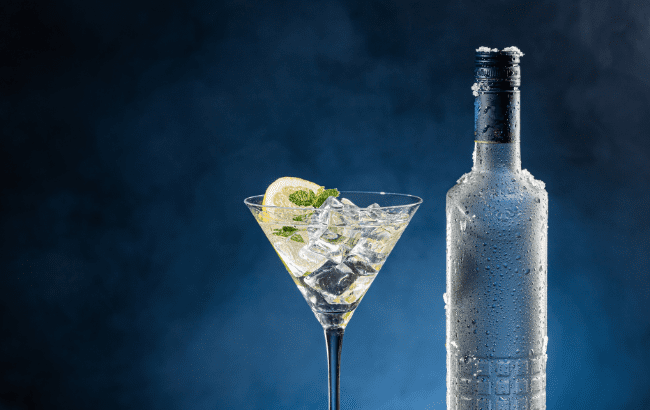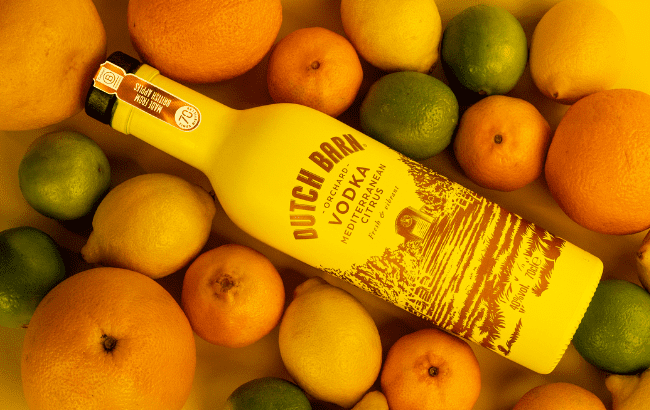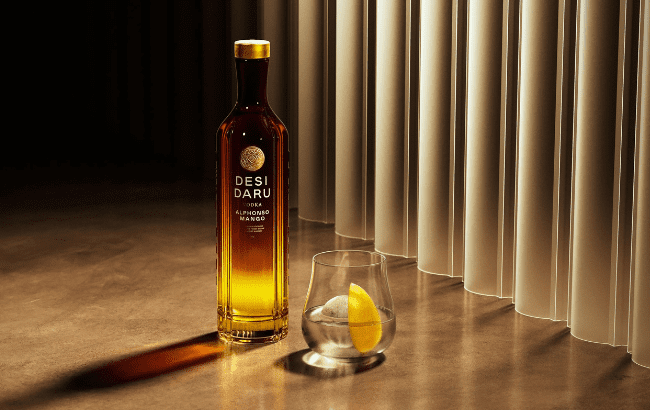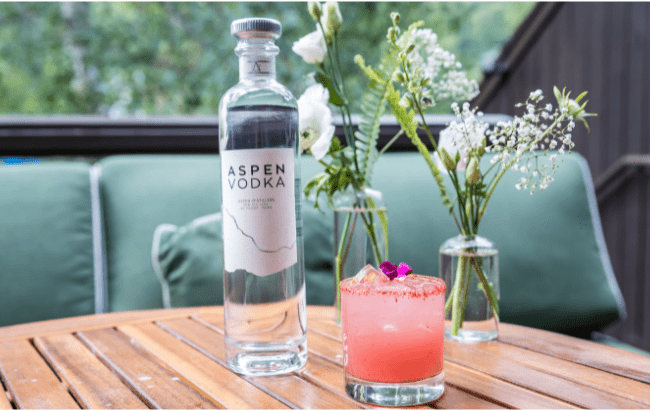World Spirits Report 2024: Vodka
By Nicola CarruthersOur annual examination of the health of the world’s spirits categories asks what could happen over the coming year, starting with a deep dive into vodka.

The global spirits sector has had its fair share of ups and downs in recent years as the industry has grappled with duty rises, tariffs, the effects of war, and shifts in consumption patterns. In the past 12 months in particular, spirits have struggled to grow as a result of inflationary pressures. There are several bright spots though, as the rise of the ready‐to‐drink (RTD) category and the growth of low‐and‐no drinks disrupt the traditional alcohol market.
IWSR revealed that spirits (excluding national spirits such as Chinese baijiu and Japanese shochu) had a 30% share of the global alcohol sector in 2023, while wine held a 15% share. Beer retained the biggest share, at 52%.
By 2028, IWSR forecasts spirits will increase slightly to hold a 31% share, while wine will have a 14% share. Beer’s share is expected to remain the same, while the RTD category could have a 3% stake within the next few years – signifying its growth potential.
Data from IWSR showed that global spirits volumes were flat last year, with “subdued growth” expected for the coming years. IWSR predicts 2023‐28 compound annual growth rate (CAGR) increases of 1% by volume and 2% by value, excluding national spirits.
Looking to 2025 and the spirits sector could face fresh challenges when US president Donald Trump returns to the White House.
Spiros Malandrakis, head of alcoholic drinks at Euromonitor, is cautious about Trump’s return due to potential tariffs that could affect the spirits sector once again.
“We will most likely be moving into the territory of trade wars in 2025,” Malandrakis predicts, adding that Trump could install tariffs “quite quickly after he gets power”.
On his social media platform, Truth Social, Trump announced he would issue an executive order to charge Mexico and Canada a 25% tariff on all products coming into the US when he takes office on 20 January. This tariff would have a particularly profound effect on Mexican spirits Tequila and mezcal, and on Canadian whisky.
Speaking about the threat of tariffs on Tequila, Malandrakis called it a “major headwind” for a category that has “already started seeing the first signs of de-premiumisation”, but he believes the sector “will not lose its relevance overnight lifestyle‐wise”.
Furthermore, the industry is also grappling with China’s imposition of anti‐dumping duties on EU brandies and Cognacs in October – a retaliation to Brussels’ 35% duty rise on China’s electric vehicles.
Tax hikes have also added further headaches for the spirits sector, particularly in the UK and Australia where they have risen in line with inflation. In October, it was confirmed that alcohol taxes in the UK would increase in February 2025 based on the Retail Price Index. It followed a whopping 10.1% hike on spirits duty in August 2023. In Australia, spirits tax rose from AU$101.85 to AU$103.89 per pure litre of alcohol on 5 August 2024, with another rise expected in February.
Malandrakis notes that all spirits categories are under pressure, with Tequila “being among the leaders in the race” in terms of growth, while Cognac is suffering the most. He spotlights no‐alcohol and spirits‐ based RTDs as sectors with “opportunity and momentum”.
With the threat of tariffs looming, Malandrakis is optimistic about the future of “local products targeting local consumption” such as Scotch in the UK and American whiskey in the US because of trade wars – signifying a “shift away from internationalism”.
And in more optimistic news, India is generating intrigue across the industry as a potential powerhouse market, with a growing demographic of premium drinkers.
Despite the generally gloomy economic outlook, there are opportunities for growth in emerging markets while the evolving preferences of a younger generation of drinkers could see new trends take hold. The spirits industry must prepare to chart a course for 2025 and unite in tackling these challenges head on.
Vodka

Vodka has continued to see its volumes slip over the past year as it tussles with booming categories such as Tequila and pre‐mixed cocktails. Using its US Navigator, IWSR found vodka volumes were down by 4% from January to June 2024 in the US, compared with the same period last year. In 2023, vodka – which accounts for 30% of all spirits volumes in the US – reported a 2.3% drop in volume, according to data from the Distilled Spirits Council of the US.
Despite a downward trajectory for vodka (and most spirits segments in the US during this period), there are bright spots for the category internationally. In France, IWSR says spirits growth will come from categories such as vodka, which is expected to post a compound annual growth rate of 2% in volume (2023‐2028).
If we look at the global data from Euromonitor International, vodka sales by volume are expected to be stagnant by the end of 2024 at 338.4 million cases, slightly down on 338.44m in 2023. The forecast for 2025 looks slightly worse, with an additional decline to 337.4m cases. However, the enormity of these volumes should not be underestimated. Plus, vodka is expected to perform better by value, growing from US$78.2 billion in 2023 to US$79.4bn in 2024, and potentially to US$82.6bn by 2025.
Deb Dasgupta, vice‐president of marketing at Pernod Ricard‐owned Absolut Vodka, is confident about vodka’s growth prospects. “Vodka stands as the unsung hero of spirits – resilient, versatile, and endlessly creative,” she says. “Its neutrality not only keeps consumers coming back but also makes it a strong category recruiter, welcoming new drinkers into the world of spirits.
“As the ultimate blank canvas for cocktail artistry – a trend thriving this year – and with the ultra‐premium segment set to grow by 3% in volume through 2027 [according to IWSR], vodka’s future looks anything but shaken.”
This year alone we’ve seen brands ramp up their marketing efforts. Nemiroff secured a partnership with four English Premier League football teams, while New Amsterdam Vodka partnered with YouTube Series Hot Ones on a spicy vodka, and sponsored the US’s National Hockey League and the Ultimate Fighting Championship. Bacardi‐owned Grey Goose vodka also sold 556,000 serves of its signature Honey Deuce cocktail during the US Open tennis tournament. The consumer demand is clear.
Collaborations will continue to be key for Absolut, too. “Over the coming year, we’ll continue to make a mark on nightlife, culture, and the arts, amplifying voices that resonate with our ethos of inclusivity and self‐ expression,” says Dasgupta.
“Through collaborations with artists like Olly Alexander and Samuel Ross, and unexpected partnerships with brands like Heinz and CopyLab, we’re weaving a global cultural tapestry. Each partnership keeps us authentically connected and relevant worldwide.”
Brands to watch in 2025

Dutch Barn
Hailing from Yorkshire in the UK, organic vodka Dutch Barn recently revealed a new visual identity as part of a multi‐million‐pound investment, and is backed by comedian Ricky Gervais, who hopes to take the brand global. With Gervais’ support, it could see huge success in the US, a major vodka market.

Desi Daru
The British‐Indian vodka brand has been making a serious splash over the past year. It has big plans to grow and is seeking £1 million (US$1.3m) to expand in the UK and overseas. Now available through Master of Malt and Selfridges, Desi Daru also revealed its first cocktail contest in 2024 – a move that could help it gain additional favour with bartenders.

Aspen Vodka
The Colorado‐based brand secured a partnership with WES Brands this year to ‘reshape the vodka category’ and expand it throughout the US. Plus, it claims to be the world’s most sustainable distillery after gaining a new certification. Could 2025 see the brand take on global players with its green credentials?
Related news
Top 10 award-winning luxury spirits to indulge
